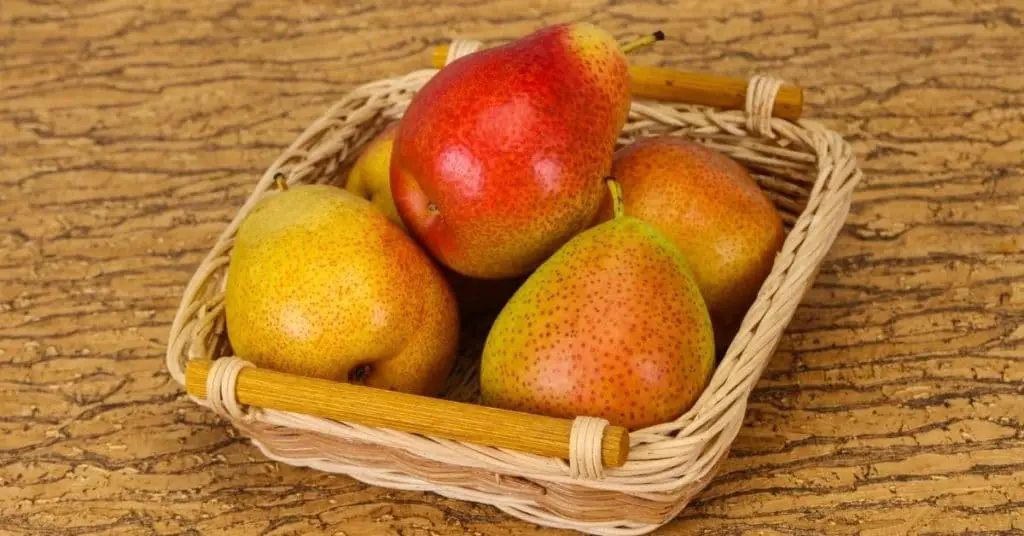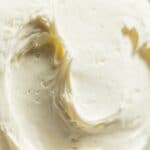In short, yes, ripe pears can be successfully frozen. It is recommended to preserve them in syrup or use dry packing methods for optimal color, texture, and flavor upon thawing.
Nectarous and fruity, pears are fabulous to use in both sweet and savory applications. They can be enjoyed in cooked dishes, dried, or raw to add loads of flavor and texture.
Fresh pears store well in a cool, dry place, but as with most ripe fruit they don’t last long once ripe or cut. Freezing pears is a great way to preserve them and prevent food waste. There are a few ways to prepare pears for freezing to ensure the best preservation of flavor, texture, and color.
Read on to find out everything you need to know to successfully store your pears in the freezer.
Can Pears Be Frozen?
Yes, ripe pears can be successfully frozen. Despite the many different types of pears, they all require the same preparation and treatment prior to freezing.
Preserving pears in syrup for freezing will result in optimal color and texture on thawing, especially if you are planning to use them uncooked.
If they are going to be transformed into a pie, the best way to freeze pears is by dry packing or coated in granular sugar. In this case, you could even add spices to your pears before freezing.
Follow the below steps and helpful tips to make sure you get the best out of your frozen pears.
How To Freeze Pears
Pears should be frozen when fresh and at peak ripeness for the best results. Do not freeze unripe or overripe pears.
Step 1: Clean
Wash in cool water, peel, and core the pears. Once cleaned, cut the pears into halves, quarters, slices, or cubes as preferred for freezing.
Step 2: Prevent Discoloration
Mix 3 tablespoons of lemon juice (or a 1/4 teaspoon citric acid) with 3 cups of water and soak the pears for a few minutes directly after cutting them. The acid-water mixture prevents the pears from browning.
Step 3: Prepare and Pack
The method you choose to prepare your pears may depend on how the pears will be used once thawed.
Method 1: Sugar Coat
Sprinkle granulated sugar over the sliced pears and toss to coat well. Portion the sugar-coated pears into appropriate amounts for freezing according to the amount you would need to thaw at any given time.
Pack each portion into a resealable freezer bag and press out any air before sealing the bag to prevent freezer burn.
Method 2: Sugar Syrup
Another way to preserve pears is by submerging them in a simple syrup. The result after thawing will be similar to canned fruit. This is the best method if you are planning to use the pears uncooked after thawing in a fruit salad or on a cheeseboard.
A medium syrup is recommended for freezing pears, although you can also use a light syrup. To create your syrup, dissolve 2 cups of sugar in 3 cups of lukewarm water in a large saucepan. Bring to a boil and stir until all the sugar dissolves completely. Add the cut pear chunks or slices to the hot syrup for 2 minutes.
Drain, keeping the syrup to the side, and cool completely. Do not pack the pears or syrup while warm. Pack the cooled pears into resealable freezer bags. Remove excess air before sealing to prevent freezer burn.
Alternatively, you can portion the pears into airtight freezer safe containers and cover the pears with the cooled syrup. Before closing the lid, place a piece of parchment paper against the surface of the fruit to keep the pears submerged in the syrup and protected from contact with air.
This dry pack method is best used for pears you are planning to use in other cooked dishes after thawing.
Method 3: Flash Freeze
Line a baking sheet with wax paper and spread the pear slices across the sheet. Place the baking sheet into the freezer until frozen solid. Transfer the frozen pears from the cookie sheet and pack them into freezer safe bags in the desired portions. Remove as much air as possible before sealing each bag.
Step 4: Label and Freeze
Keep track of how long the pears have been stored by labeling each container or freezer bag with the date before placing it in the freezer.
How To Thaw Frozen Pears
To defrost, remove the pears from the freezer and place the container or bag in the fridge. It is best to put the container or freezer bag onto a plate or in a large bowl to catch any water running off the container during thawing. Leave overnight to defrost. If frozen in a sugar syrup, stir the mixture occasionally.
Types of Pears
There are hundreds of pear varieties produced across the globe, depending on seasonality and climate. Although all pears have a similar flesh color, their shape, texture, skin color, and taste vary slightly.
The outer skin of pear can be green, red, yellow, or brown with its shape being pear-shaped or round. Some pears have a sweeter taste while others present a more neutral flavor. Certain varieties are crisp and firm while some varieties are ideal for cooking.
Pears are popular in fruit salads, savory salads, used in tarts, puddings, cheese platters, as dried fruit, pear compotes, fruit juice, pastry fillings, and even in a sorbet. If not eaten raw, they are usually baked, spiced, roasted, dried, or poached.
FAQs
Conclusion
Pears are such a versatile fruit that it is sad to see them go to waste. If it’s peak season, feel free to stock up and choose firm, ripe pears to pack for freezing. Make sure you freeze pears before they become too ripe so you can use them for months to come, even after the harvesting season is over.
Enjoy them in breakfast, lunch, dinner, and dessert dishes, baked, poached, or pureed. Finally, there is a way to enjoy pears year round in all your favorite recipes.
Up Next: Can You Freeze Cantaloupe?
Image by depositphotos/AndreySt









